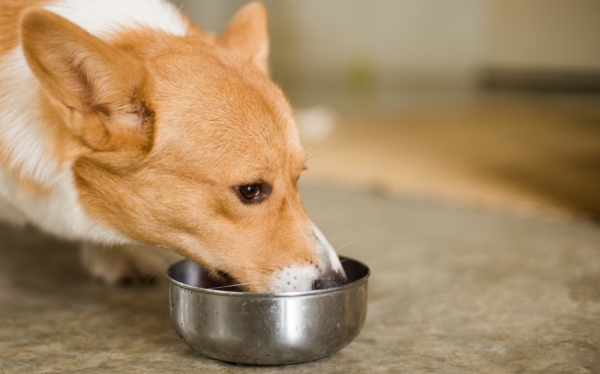
A crawfish, also known as a crayfish, rock lobster, and crawdad, is a well-known crustacean eaten worldwide. People of many cultures eat them; dogs can eat them, too, if they’re prepared properly. Some preparation methods can be dangerous for dogs, but a plain, well-cooked, de-shelled crawfish is a healthy addition to a dog’s diet (as long as they aren’t allergic!).

What Are Crawfish?
Crawfish is a freshwater crustacean (similar to Lobsters) found globally in rivers, lakes, and swamps. They’re a popular dish in North America, often served with Cajun spices. Nearly all the crawfish served in the US are sourced from Louisiana, which loves the little critter so much that it made the crawfish the official State crustacean!
Is Crawfish Safe for Dogs?

Crawfish is safe for your dog to eat if it’s prepared and cooked correctly and if you monitor your dog for any signs of allergy if it’s the first time they’re eating shellfish. Crawfish is a healthy treat for dogs, but there are some things you should do before letting them enjoy it.
Crawfish is often served in the shell, posing a choking hazard for dogs as they can’t remove it themselves. Crawfish is also usually cooked with spices like Cajun seasoning, which can contain onion and garlic powders (among other spices) which are very toxic to dogs.
In addition, some dogs can be sensitive to shellfish or have an allergy which can mean they react badly to it. Finally, undercooked crawfish can pose as much risk to your dog’s health as it can for you, so make sure any crawfish (and shellfish in general) is cooked well from fresh.
The bottom line is that crawfish is safe for most dogs to enjoy if it’s well-cooked, de-shelled, and not cooked with extra spices or seasonings.

How Do I Safely Prepare Crawfish for My Dog?
To prepare crawfish safely for your dog, think about how you’d cook it for yourself. If you’re cooking it from fresh, ensure you get live crawfish and cook them thoroughly; you want them as fresh as possible when you give them to your dog. Never give your dog raw or undercooked crawfish, as there are bacteria and parasites that your dog (and you) can ingest.
Cook Crawfish Correctly
Lung fluke infection from Paragonimus kellicotti flukes is the most common fluke found in dogs living in North America and is caused by eating raw crawfish. Signs of this infection include coughing, trouble breathing, coughing up bloody mucus, and pneumonia or pneumothorax.
Make It Plain

Make sure your crawfish is cooked plain. Many recipes call for Cajun spices, fats, and other flavor additions such as garlic or salt, and while they’re not harmful to you, they can disrupt your pet’s digestion system or cause an adverse reaction.
Onion and Garlic Powder
Onions and garlic (and all members of the allium family) are very toxic to dogs. Onion, garlic, and other alliums contain a harmful substance known as thiosulphate. Onion and garlic powders are more concentrated than their natural counterparts, meaning they are even more harmful to dogs! Thiosulphate causes a condition in dogs known as hemolytic anemia, which destroys red blood cells.
Salt
Salt can be harmful to dogs in large amounts. The amount of salt served on a crawfish is unlikely to do any harm, but large amounts of salt can sometimes be put into seasoning blends. Dehydration is the first consequence of giving your dog too much salt, but they can go on to have tremors, seizures, and even collapse if large quantities are eaten.
Remove the Shells
Crawfish are often served in the shell. While the meat of a crawfish is safe for a dog to eat, the shells certainly aren’t. Shells can be sharp and cause injury to the soft tissue in a dog’s mouth and throat, but they also present a choking hazard.
Crawfish heads and tails that are discarded can also be very tempting to our pups, so keep them out of reach! A crawfish’s head or tail can cause choking and block your dog’s intestine. This is a very serious condition, which can be fatal and is almost always treated with extensive abdominal surgery.
Give in Moderation

While most dogs will be fine eating a piece of crawfish, some might go overboard and eat too much. In addition, some dogs have more sensitive digestive systems that can be upset by a large portion of seafood, and it’s best to serve crawfish in small portions. It should never replace your pup’s regular diet but can be offered occasionally as a treat.
Allergies to shellfish can also occur in dogs (although it’s rare), so only feed a very small amount and keep a close eye on your dog if it’s their first time eating seafood. Of course, it goes without saying that if your dog is allergic to seafood, don’t give them crawfish!
Signs of shellfish allergy (after ingesting shellfish) in dogs include:
In severe allergies, the face and airways can become swollen and cause breathing problems. If you notice these signs of allergy in your dog, take them to the veterinarian immediately.
Is Crawfish Good for Dogs?
Crawfish is very healthy for dogs, as it packs a high amount of protein and nutrition in every bite. Crawfish is exceptionally good for dogs on a diet, as it’s high-protein but low-calorie. In addition, crawfish contains many essential fatty acids, such as omega-3, which help promote healthy brain function and joint movement. Let’s take a deeper look into the health benefits crawfish can offer your dog:

Final Thoughts
Crawfish are found throughout the US and are a mainstay of seafood cookouts. Dogs can join the fun and indulge in a small amount of crawfish if it’s cooked properly, is de-shelled, and hasn’t been cooked with harmful ingredients. Crawfish can be healthy for dogs that need a high-protein snack with fewer calories.
Featured Image Credit: Jumpstory

